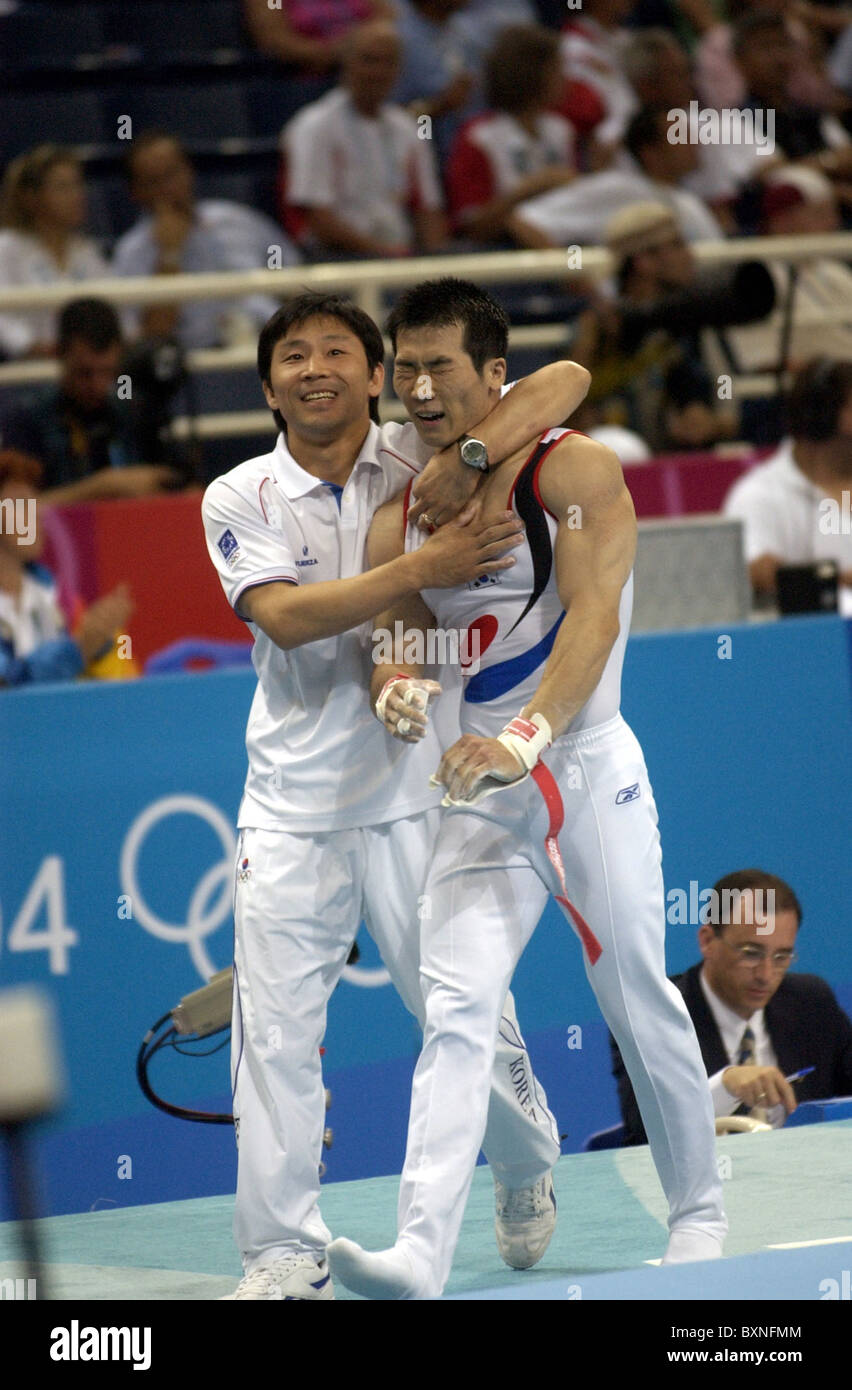Unpacking The Olympic Pole Vaulter's Look: What's Behind The Form-Fitting Gear?
When you watch the Olympic Games, it's pretty amazing to see athletes push their bodies to incredible limits, isn't it? We see them soar, sprint, and flip with such grace and strength. Among the many thrilling events, pole vaulting really stands out, especially with its unique blend of power and precision. As these incredible athletes launch themselves over astounding heights, a lot of people might notice how their uniforms fit, particularly around certain areas.
This curiosity, so it's almost, about the appearance of Olympic pole vaulters in their specialized gear is quite common. It makes sense, really, because their outfits are designed for very specific reasons, focusing on performance and aerodynamics. The way the fabric hugs their form can, in a way, highlight the incredible physical development these athletes achieve through years of dedicated training.
So, we're going to take a closer look at why pole vaulters wear what they do, how their bodies are built for this demanding sport, and how all of this comes together to create the distinctive visual you see on the field. It's all part of the fascinating story of Olympic athleticism, you know, where every detail, even the clothing, plays a part in chasing those records.
Table of Contents
- Why the Gear Fits So Closely: Performance and Purpose
- The Pole Vaulter's Physique: Built for Flight
- Beyond the Surface: Focusing on Skill and Dedication
- Uniform Evolution: From Ancient Games to Modern Tech
- Frequently Asked Questions About Pole Vaulters and Their Attire
- Wrapping It Up: Appreciating Olympic Pole Vaulting
Why the Gear Fits So Closely: Performance and Purpose
Pole vaulting outfits are, you know, quite distinct. They're typically made from stretchy, form-fitting materials like spandex or lycra. This isn't just a fashion choice; it's a very practical decision for the sport. The main goal is to reduce drag, which means less air resistance as the athlete runs down the runway and then, quite literally, flies through the air. Every tiny bit of resistance can affect their speed and height, so, actually, sleekness is key.
These specialized uniforms also offer a good bit of muscle compression. This compression can, apparently, help with blood flow and reduce muscle vibration, which might help prevent fatigue during those powerful jumps. It's all about supporting the body as it goes through incredible stress. Plus, the snug fit keeps the fabric from flapping around, which could otherwise distract the athlete or even get caught on equipment, which, you know, would be a real problem.
So, when you see a pole vaulter, the way their clothing conforms to their body is a direct result of engineering for peak athletic performance. It's about giving them every possible advantage, making sure nothing holds them back from clearing that bar. It's, in a way, a second skin designed for speed and support.
The fabrics themselves are often quite thin, yet very strong. This combination allows for maximum flexibility, which is pretty important for the complex movements involved in a pole vault. The athlete needs to bend, twist, and extend their body fully without their clothing restricting them. This is, basically, why you see such a close fit. It's not about showing off, but about letting the body move freely and efficiently. The material also helps manage body temperature, wicking away sweat to keep the athlete comfortable during intense competition, which, you know, is a big deal.
Consider the speed these athletes generate on the runway; they are, in fact, running at nearly full sprint before planting the pole. Any loose fabric could create a tiny bit of drag that, over the course of a jump, could mean the difference between clearing a new personal best and knocking the bar down. So, the design is pretty precise. It's, like, every millisecond and every millimeter counts in this sport.
These uniforms are also designed for safety. By fitting snugly, they reduce the chance of fabric getting snagged on the pole or other equipment during the vault. This might seem like a small detail, but in a sport where athletes are propelling themselves meters into the air, every safety measure is, you know, quite important. The tight fit also means less chafing, which can be a real issue with loose clothing during repetitive, high-intensity movements. It's all part of the thoughtful engineering behind modern athletic wear.
The Pole Vaulter's Physique: Built for Flight
Pole vaulters possess a rather unique combination of physical traits, which, you know, is pretty amazing to consider. They need the explosive leg strength of a sprinter to generate speed on the approach. Then, they need the upper body and core strength of a gymnast to manipulate the pole and pull themselves over the bar. This blend of attributes leads to a very lean, muscular, and powerful build.
Their training focuses on developing these specific muscle groups. You'll often see them doing a lot of sprinting drills, weightlifting for their arms and shoulders, and core exercises that would challenge even the most seasoned athletes. All this work shapes their bodies in a way that is highly efficient for the demands of their sport. So, naturally, their muscles are well-defined, and their overall body composition is very athletic.
The form-fitting nature of their uniforms, then, simply highlights these natural athletic contours. It's not about creating an illusion; it's about showcasing the result of years of dedicated effort. When you see an Olympic pole vaulter, you're looking at a body that has been finely tuned, almost like a machine, for one specific, incredible purpose: to vault higher than anyone else.
Their bodies are, essentially, a testament to the diverse requirements of the pole vault. They need the speed of a track runner, the strength of a weightlifter, and the agility of a gymnast. This combination results in a physique that is both strong and slender, allowing them to be powerful without carrying excess weight that would hinder their ascent. It's, you know, a very specialized body type.
The core strength, in particular, is extremely important. A strong core helps transfer energy from the run-up through the pole, and then helps the athlete control their body as they invert and clear the bar. This emphasis on core work leads to very developed abdominal and back muscles, which, you know, contribute to their overall lean and strong appearance. So, it's all connected to the demands of the sport.
Furthermore, the high-intensity nature of their training means these athletes typically have very low body fat percentages. This, combined with their significant muscle mass, makes their muscle definition more apparent, especially when wearing tight clothing. It's, basically, a visual representation of their peak physical condition. They are, after all, competing at the world’s foremost sports competition, where every physical advantage matters.
Beyond the Surface: Focusing on Skill and Dedication
While the visual aspect of athletic wear can catch our eye, it's really important to remember what truly matters in pole vaulting: the incredible skill, the mental fortitude, and the sheer dedication of these athletes. Each jump is a complex sequence of actions, requiring precise timing, coordination, and a deep understanding of physics. It's, like, way more than just running and jumping.
These athletes spend countless hours perfecting their technique, analyzing every step of their approach, every hand placement on the pole, and every subtle movement as they ascend. They face intense pressure, competing on the world stage with millions watching. Their focus is completely on the bar, the pole, and their own performance, not on how their uniform looks. This, you know, is the true essence of the Olympic spirit.
So, when we watch them, it's a good idea to shift our attention to the amazing feats they accomplish. Celebrate the shattered records, the personal bests, and the pure joy of competition. The clothing is just a tool, a necessary part of their equipment, allowing them to perform at their very best. It's, you know, about the athleticism, pure and simple.
Think about the mental game involved, too. Pole vaulters need incredible focus and courage. They are, quite literally, launching themselves several meters into the air, trusting their training and their equipment. This mental strength is, arguably, as important as their physical prowess. It's what allows them to perform under the immense pressure of the Olympic Games, where, you know, history is made.
The Olympics themselves are an athletic festival that originated in ancient Greece and were revived in the late 19th century. They feature summer and winter sports competitions in which thousands of athletes from around the world participate in a variety of competitions. The spirit of the games is about pushing human limits, not about superficial appearances. The official website of the Olympics, for instance, focuses on breaking sports news, video highlights, and original sports series, celebrating the athletic achievements.
Every single jump you see at the Olympics is the culmination of years, sometimes decades, of sacrifice and hard work. These athletes have dedicated their lives to mastering their craft. They've overcome injuries, setbacks, and intense competition just to get to that world stage. So, really, the "bulge" or any other aspect of their attire is a tiny footnote compared to the vast story of their dedication. It's, you know, a pretty inspiring journey.
Uniform Evolution: From Ancient Games to Modern Tech
Thinking about athletic wear, it's pretty wild to consider how much it has changed since the ancient Olympic Games, which, as you know, were revived in the late 19th century. Back then, athletes often competed with very little clothing, sometimes even naked. The focus was entirely on the raw human form and natural ability. Fast forward to today, and we see a huge emphasis on technology in sports apparel.
Modern Olympic uniforms, like those worn by pole vaulters, are the result of extensive research and development. Designers work closely with athletes and sports scientists to create materials that are lightweight, breathable, and offer optimal support. The goal is always to enhance performance without hindering movement. This means fabrics that wick away sweat, reduce chafing, and provide just the right amount of stretch. It's, basically, a science in itself.
The official website of the Olympics, which provides access to breaking sports news and video highlights, often showcases these advancements. You can see how the gear helps athletes push boundaries and set new records. For the Paris 2024 Olympics, for instance, there was a big push for gender parity in sports, and the uniforms reflect a universal design approach focused on athletic function for everyone. The design stays pure and simple, using only the essential lines to express ideas of union and movement. It's, you know, a pretty cool blend of history and innovation.
Historically, athletic wear was far less specialized. Early 20th-century Olympians wore heavier, less flexible fabrics that absorbed sweat and could become quite uncomfortable. The shift to synthetic materials in the mid-to-late 20th century was a real game-changer, allowing for lighter, more aerodynamic, and supportive clothing. This evolution has, in some respects, mirrored the advancements in sports science itself.
Today's materials are engineered down to the fiber level. Some uniforms even incorporate textures or patterns that are designed to manipulate airflow, further reducing drag. This kind of detail, you know, shows how serious the pursuit of marginal gains has become in elite sports. It's about optimizing every single element that could possibly influence an athlete's performance.
The focus on sustainability is also growing in athletic apparel design. Many brands are now using recycled materials or more environmentally friendly production methods, which is a positive step. So, not only are the uniforms designed for peak performance, but they are also, increasingly, being made with the planet in mind. It's, you know, a broader trend that affects all aspects of the Olympic Games, from the venues to the clothing athletes wear.
Learn more about Olympic history and sports on our site. And to see the latest updates from the 2024 Olympics in Paris, you can check out our dedicated Paris 2024 page.
For more detailed information on the science behind modern athletic textiles, you could check out research on athletic apparel technology from reputable sources. It's pretty fascinating stuff, actually, how much thought goes into what athletes wear.
Frequently Asked Questions About Pole Vaulters and Their Attire
Why do pole vaulters wear such tight clothing?
Pole vaulters wear tight clothing primarily for performance reasons. The snug fit helps reduce air resistance, making them more aerodynamic as they run and jump. It also provides muscle compression, which can support muscles and potentially help with blood flow and reduce fatigue during intense activity. It's, basically, all about optimizing their movement and efficiency.
Are Olympic uniforms designed to highlight certain body parts?
Olympic uniforms are designed with athletic performance, comfort, and safety as the main priorities. While the form-fitting nature of some sports attire naturally showcases an athlete's muscular physique, the primary design intent is not to highlight specific body parts. Instead, it's about providing the best possible support and minimal interference for competition. So, you know, it's more about function than form in that specific way.
What materials are pole vaulting uniforms

U.S. Olympic and Paralympic officials bar biological men from competing

Olympic rings - Symbol of the Olympic Movement

Olympic games korea hi-res stock photography and images - Alamy